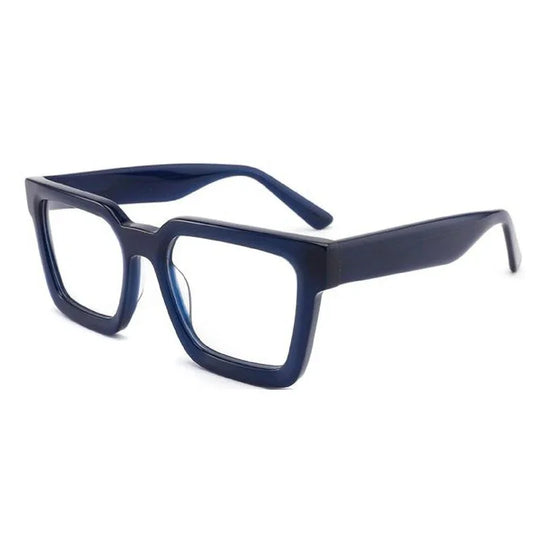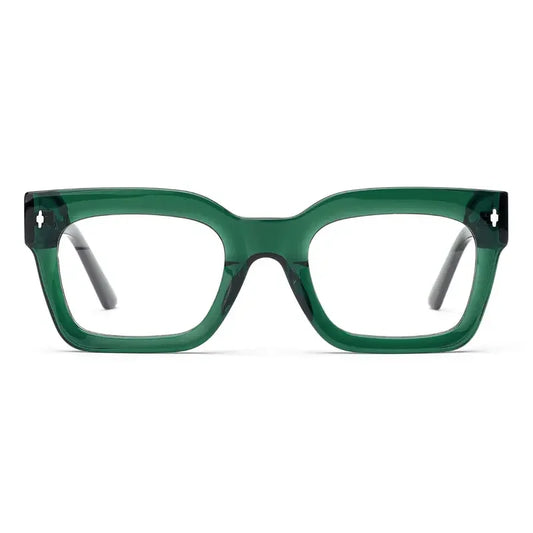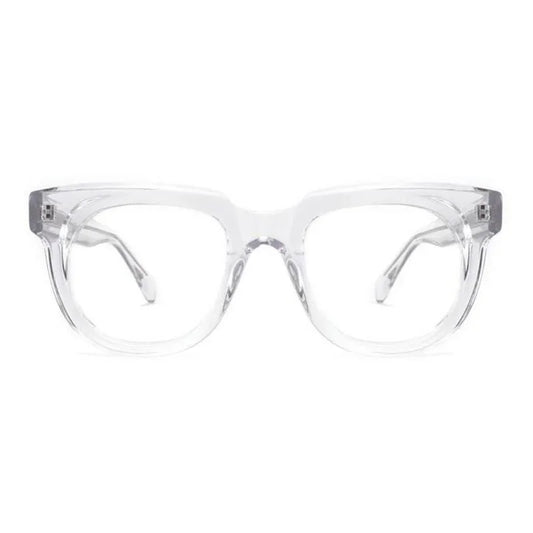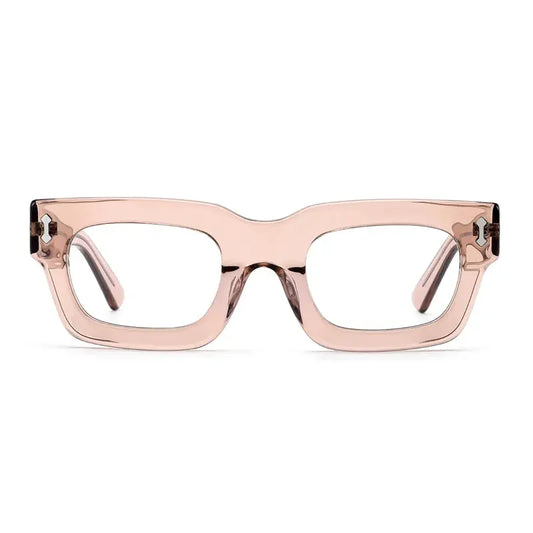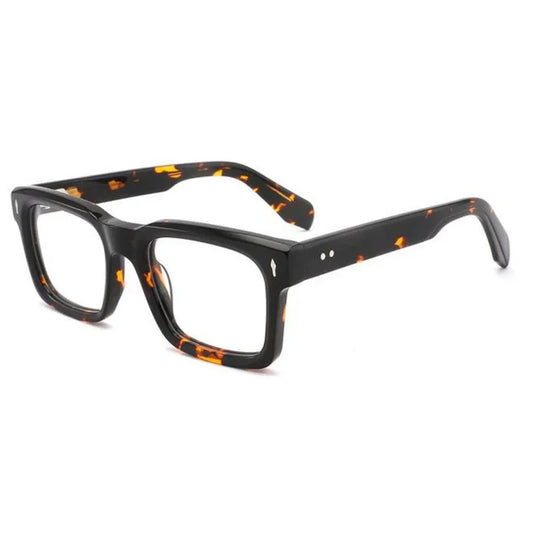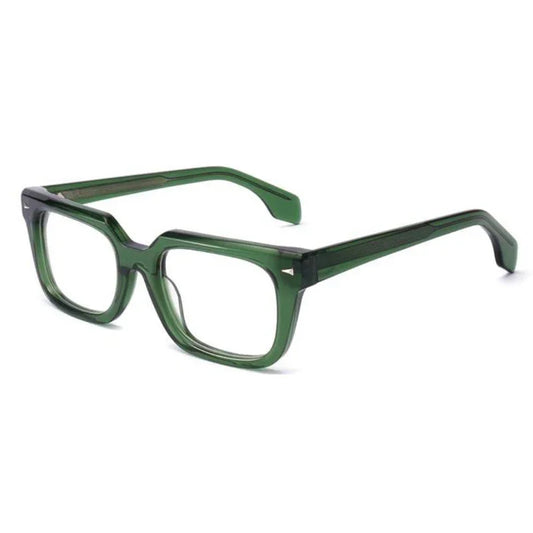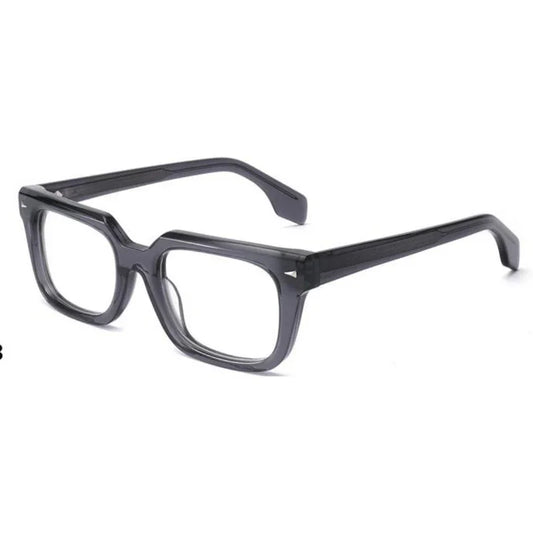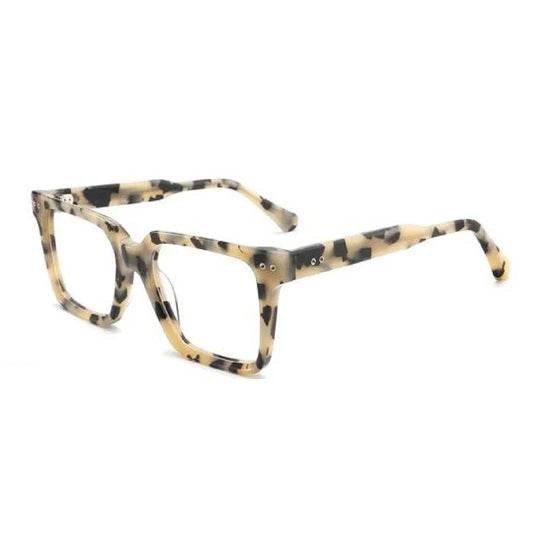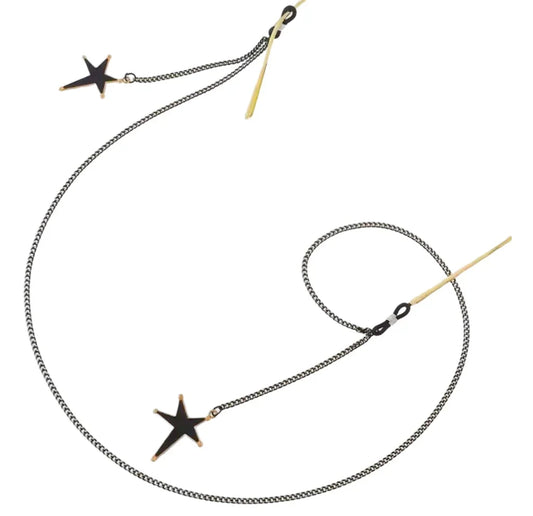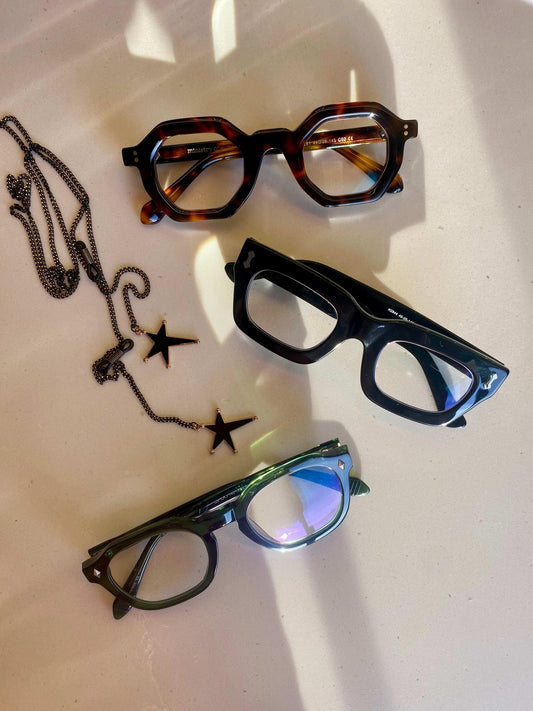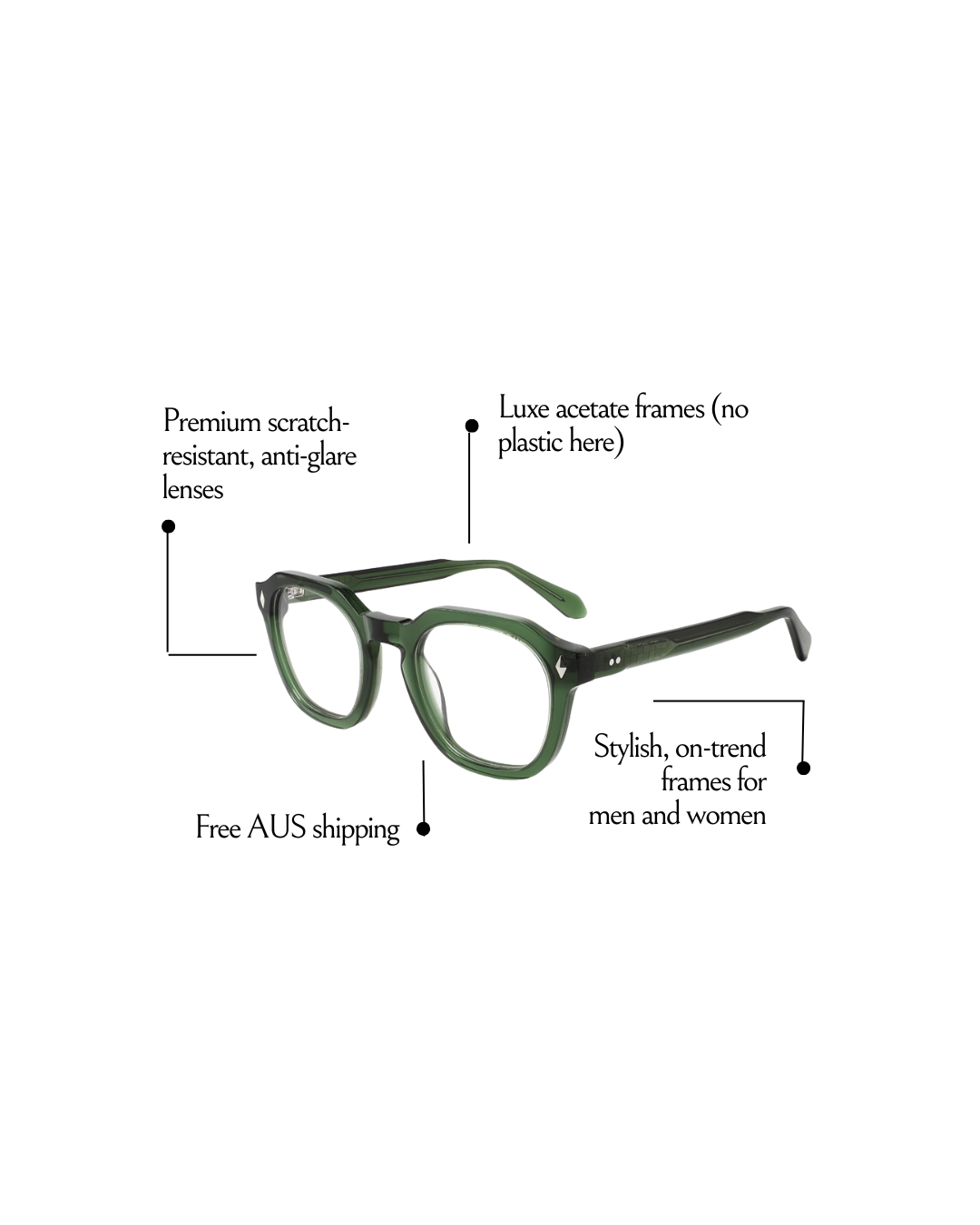
Understanding Reading Glasses Frame Materials for Better Choices
Reading glasses are everywhere and most folks think the only choice is what shape or colour to pick. But there’s more to it than meets the eye. Some frames use titanium that is up to 45 percent lighter than standard metals, and others are made from innovative plant-based plastics that can flex and bend without snapping. The surprise is, the material hidden in your specs can change your comfort level, your style, and even your health in ways you might not expect.
Table of Contents
- What Are Reading Glasses Frame Materials?
- Why Reading Glasses Frame Materials Matter
- How Different Materials Impact Comfort And Style
- Common Types Of Reading Glasses Frame Materials
- Choosing The Right Frame Material For Your Needs
Quick Summary
| Takeaway | Explanation |
|---|---|
| Choose materials based on comfort | Consider hypoallergenic and lightweight options for extended wear comfort. |
| Durability is key | Opt for corrosion-resistant and impact-resistant materials for longevity. |
| Material affects style | Your choice of frame materials can communicate personal style and professionalism. |
| Assess your lifestyle needs | Match frame materials to your daily activities for optimal functionality. |
| Understand ergonomic factors | Unique material properties impact weight distribution and skin interaction for better fit. |
What are Reading Glasses Frame Materials?
Reading glasses frame materials represent the foundational physical components that determine the quality, comfort, and durability of eyewear. These materials serve as the structural backbone of reading glasses, influencing not just appearance but also performance and wearer experience.
Understanding Material Composition
Frame materials are primarily categorised into two broad groups: metals and non-metal polymers. Each category offers unique characteristics that impact how reading glasses look, feel, and function. Metals like stainless steel, titanium, and nickel alloys provide strength and lightweight properties, while non-metal materials such as acetate, polycarbonate, and nylon offer flexibility and diverse aesthetic possibilities.
The selection of frame material involves considering multiple factors:
- Durability: How well the material withstands daily wear and potential impacts
- Weight: The comfort level during extended periods of use
- Flexibility: The material’s ability to adjust and maintain shape
- Aesthetic appeal: Visual characteristics and style potential
Performance and Practical Considerations
Beyond basic structural requirements, reading glasses frame materials must meet specific performance standards. Lightweight materials reduce nose bridge pressure, while corrosion-resistant options ensure longevity. Hypoallergenic materials become crucial for individuals with sensitive skin or metal allergies.
Modern manufacturing techniques have significantly expanded material options. Advanced polymers and metal alloys now provide enhanced features like temperature resistance, increased strength-to-weight ratios, and improved ergonomic designs. Read more about our guide to glasses frame styles to understand how material selection impacts overall eyewear performance.
Whether you prioritise comfort, style, or functionality, understanding reading glasses frame materials empowers you to make informed choices that align with your personal preferences and practical needs.
Why Reading Glasses Frame Materials Matter
Reading glasses frame materials are far more than aesthetic choices. They represent critical technical decisions that directly impact vision comfort, long-term wearability, and overall user experience. Understanding the significance of frame materials allows individuals to make informed choices that extend beyond simple visual correction.
Health and Comfort Considerations
The interaction between frame materials and human physiology is complex and nuanced. Different materials respond uniquely to skin chemistry, temperature variations, and prolonged wear. Hypoallergenic materials become crucial for individuals with sensitive skin, preventing potential allergic reactions or irritation. Weight distribution across the nose bridge and temple areas determines comfort levels, making material selection a critical ergonomic decision.
Key comfort factors include:
- Skin compatibility: Preventing allergic reactions and skin irritation
- Weight distribution: Reducing pressure points and potential headaches
- Thermal adaptation: Managing temperature sensitivity during wear
- Flexibility: Enabling natural adjustments to facial contours
Durability and Long-Term Performance
Frame materials directly influence the longevity and reliability of reading glasses. Corrosion-resistant metals and high-quality polymers ensure glasses maintain structural integrity through daily use. Advanced materials like titanium alloys provide exceptional strength-to-weight ratios, offering durability without compromising comfort. Check out our reading glasses fit guide to understand how material selection impacts overall performance.
The right frame material transcends mere functionality. It represents an investment in personal comfort, visual health, and daily quality of life. Thoughtful material selection transforms reading glasses from simple vision correction tools into personalised accessories that adapt seamlessly to individual needs and preferences.
How Different Materials Impact Comfort and Style
Reading glasses frame materials are not just technical components but personal expression tools that significantly influence both physical comfort and individual aesthetic preferences. The intricate relationship between material properties and user experience transforms eyewear from functional accessories to personalised style statements.
Ergonomic Material Characteristics
Each frame material interacts uniquely with human physiology, creating distinctive comfort profiles. Lightweight metals like titanium distribute weight effortlessly, reducing pressure on the nose bridge and temple areas. Flexible polymer materials like acetate adapt naturally to facial contours, providing a customised fit that minimises discomfort during extended wear.
Key ergonomic considerations include:
- Weight distribution: Managing pressure across facial contact points
- Skin interaction: Preventing irritation and allergic responses
- Thermal regulation: Managing temperature sensitivity during wear
- Flexibility: Enabling natural movement and adaptation
Aesthetic and Personal Expression
Frame materials serve as visual storytellers, communicating personal style and individual personality. Metallic frames suggest professional sophistication, while vibrant acetate frames convey creative expression. Translucent materials offer subtle elegance, and textured surfaces provide tactile complexity that goes beyond visual appeal. Explore our vintage frame styles guide to understand how material choices reflect personal aesthetic preferences.
Beyond visual appeal, material selection reflects individual lifestyle needs. Sports enthusiasts might prioritise impact-resistant polymers, while professionals might select sleek, minimalist metal frames. Understanding material nuances empowers individuals to select reading glasses that seamlessly integrate functionality with personal style, transforming vision correction into a tailored, expressive experience.
Common Types of Reading Glasses Frame Materials
Reading glasses frame materials represent a diverse landscape of technological innovation and design, offering wearers multiple options to suit individual preferences, lifestyle needs, and aesthetic sensibilities. Understanding the distinctive characteristics of different materials enables more informed selection and personalised eyewear experiences.
Metal Frame Materials
Metal frames constitute a sophisticated category of reading glasses materials, presenting unique performance characteristics. Titanium stands out as a premium option, offering exceptional strength-to-weight ratios and remarkable corrosion resistance. Stainless steel provides durability and affordability, while nickel alloys deliver flexible adjustability. These metals can be engineered to create lightweight, resilient frames that withstand daily wear and environmental challenges.
Key metal frame advantages include:
- Durability: Exceptional resistance to physical stress
- Lightweight design: Minimising nose bridge pressure
- Hypoallergenic properties: Reducing potential skin irritation
- Precision engineering: Enabling intricate frame designs
Polymer and Synthetic Materials
Polymer-based materials revolutionise reading glasses frame construction, offering unprecedented design flexibility and performance. Learn more about why acetate reading glasses are exceptional and understand their unique benefits. Acetate, a plant-based plastic, provides rich colour possibilities and comfortable wear. Polycarbonate frames deliver impact resistance, making them ideal for active users. Nylon-based materials offer remarkable flexibility and temperature adaptability, ensuring consistent comfort across various environmental conditions.
Synthetic materials represent more than technical components. They embody a convergence of design innovation, ergonomic considerations, and personal expression. By understanding the nuanced properties of different frame materials, individuals can select reading glasses that not only correct vision but also complement their personal style and functional requirements.
Below is a comparison table summarising the key properties, advantages, and considerations for common reading glasses frame materials, helping you assess which type best matches your comfort and lifestyle needs.
| Frame Material | Key Properties | Advantages | Considerations |
|---|---|---|---|
| Titanium | Very lightweight; strong; hypoallergenic | Superior comfort; corrosion-resistant | Typically more costly |
| Stainless Steel | Durable; moderately lightweight | Affordable; long-lasting | May cause allergies in some |
| Nickel Alloys | Flexible; adjustable fittings | Easy to customise fit | Can provoke allergic reactions |
| Acetate | Flexible; plant-based; colourful | Wide style options; comfortable | Less resistant to harsh impacts |
| Polycarbonate | Impact resistant; lightweight | Great for active lifestyles | Less variety of colours |
| Nylon/Polyamides | Flexible; temperature adaptive | High comfort; resilient | May degrade with sunlight |
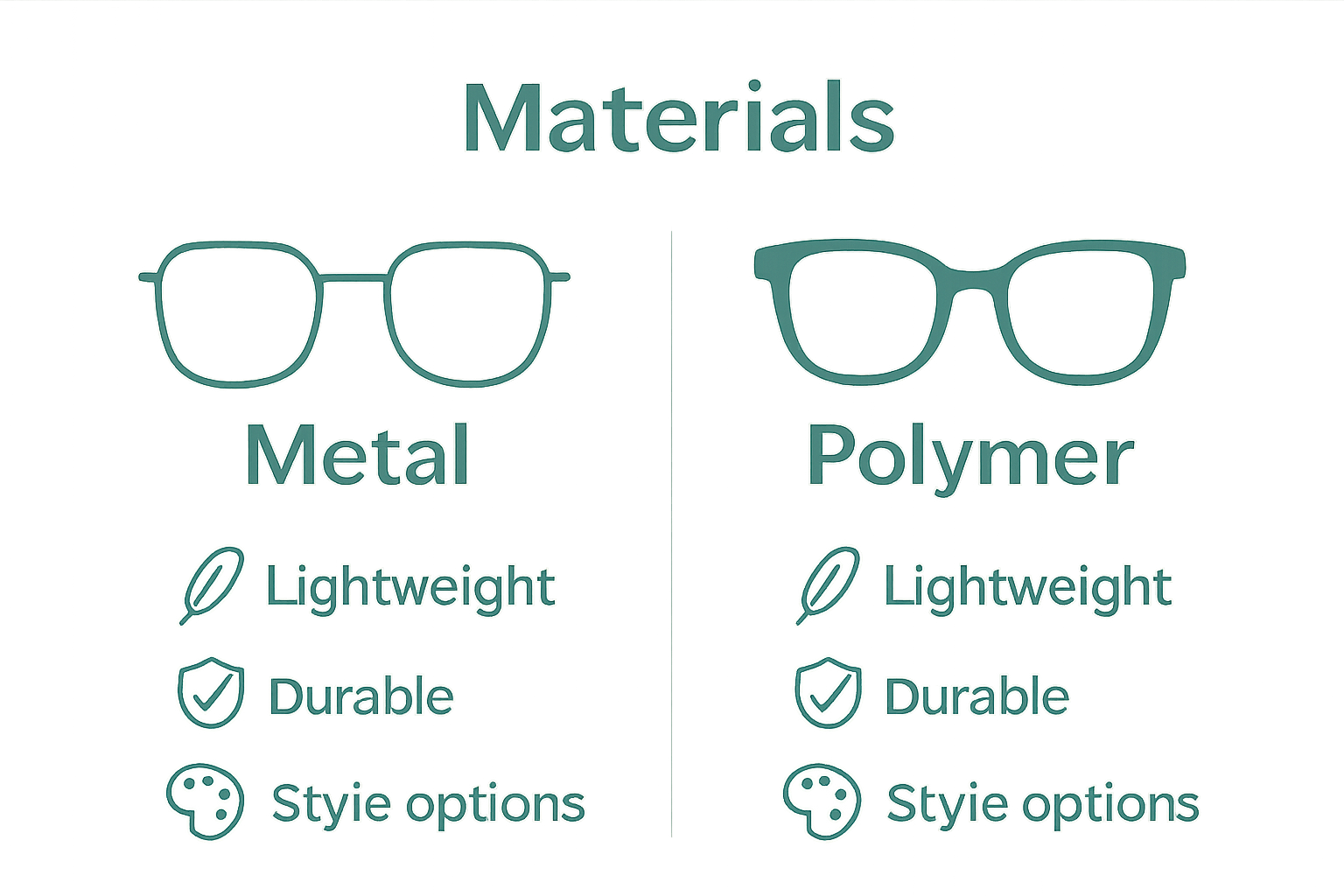
Choosing the Right Frame Material for Your Needs
Selecting the ideal reading glasses frame material requires careful consideration of personal lifestyle, physical characteristics, and individual preferences. The perfect frame transcends mere visual correction, becoming an extension of personal style and functional requirement.
Personal Lifestyle Assessment
Your daily activities and professional environment significantly influence frame material selection. Active individuals require robust, impact-resistant materials like polycarbonate or titanium, which offer durability and lightweight performance. Professional settings might demand sleek metal frames that communicate sophistication, while creative environments welcome more expressive, colourful acetate options.
Critical lifestyle considerations include:
- Activity level: Matching material durability to physical demands
- Professional environment: Aligning frame aesthetics with workplace culture
- Skin sensitivity: Selecting hypoallergenic materials
- Maintenance preferences: Choosing materials easy to clean and adjust
Physical Comfort Evaluation
Physical comfort depends on understanding your unique physiological characteristics. Individuals with sensitive skin might prioritise hypoallergenic materials like titanium or specific polymer blends. Nose bridge shape and weight distribution determine how different materials feel during extended wear. Explore our comprehensive reading glasses fit guide to understand how frame materials interact with individual facial structures.
Ultimately, choosing the right frame material is a personalised journey of balancing functionality, comfort, and self-expression. By carefully evaluating lifestyle needs, physical characteristics, and aesthetic preferences, you can select reading glasses that not only enhance vision but also reflect your individual personality and practical requirements.
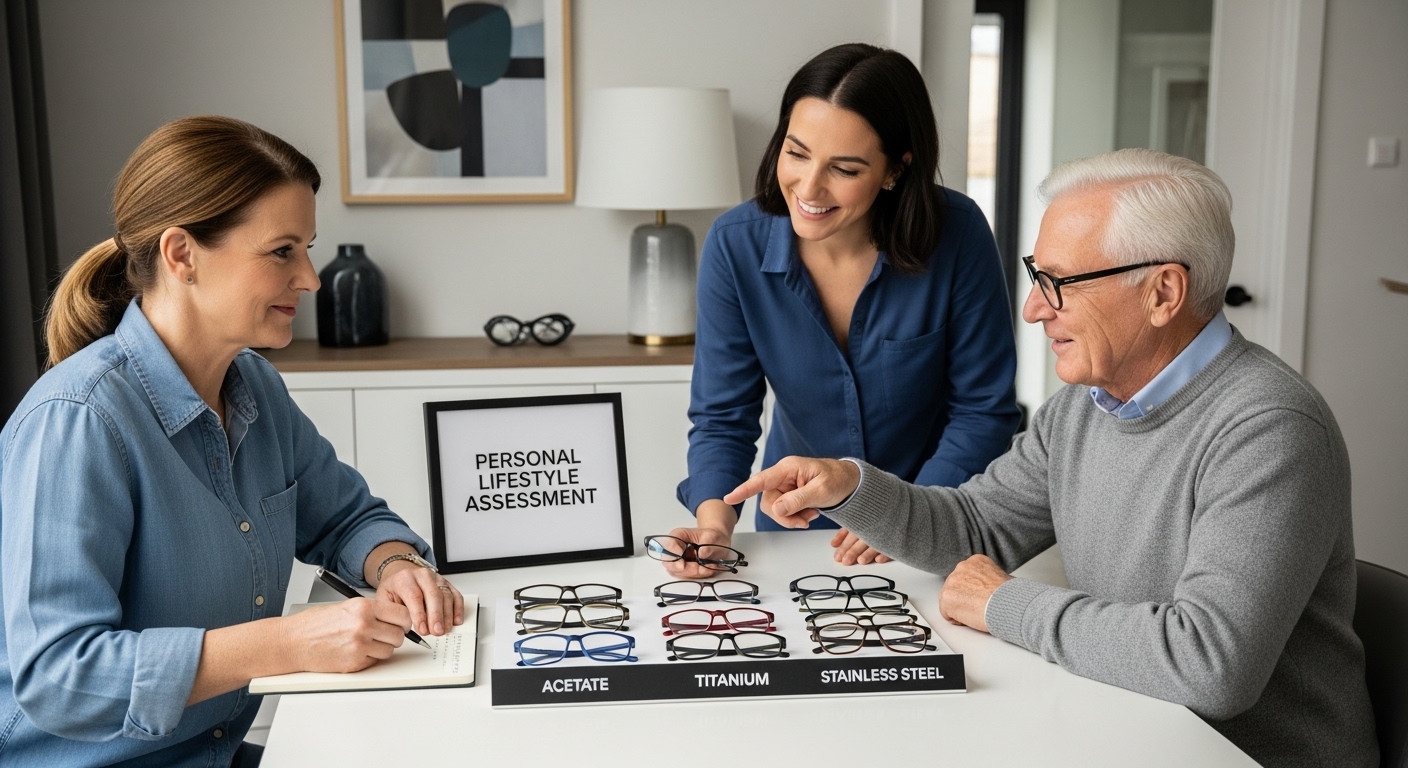
Choose the Perfect Reading Glasses Frame Material for You
Struggling to find reading glasses that truly fit your comfort, lifestyle, and personal style? It is frustrating when frame materials cause discomfort or just do not match your needs. Our article explained how important it is to select the right frame material so your reading glasses can look good, feel comfortable, and last longer.
Discover our diverse range of glasses frames and see how quality craftsmanship makes a difference.
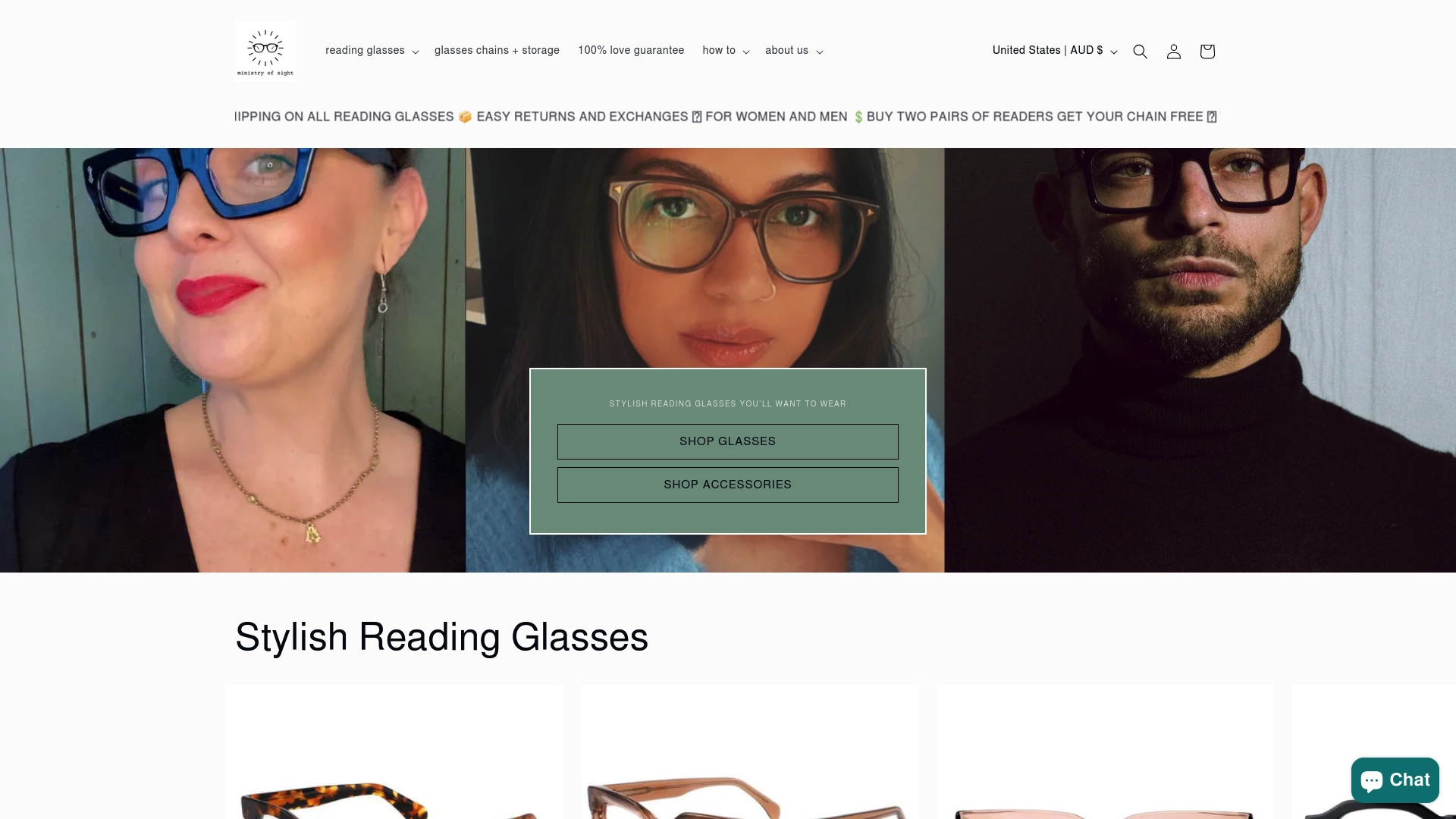
Stop settling for frames that do not suit your day-to-day life. At Ministry of Sight you will find stylish and high-quality reading glasses for men and women, all crafted from carefully selected materials. Whether you need lightweight comfort or a standout style, the perfect fit is within reach. Browse our glasses frames collection or if you love a modern look, explore our clear reading glasses. Level up your reading experience today and enjoy eyewear that feels customised for you.
Frequently Asked Questions
What materials are commonly used for reading glasses frames?
Reading glasses frames are primarily made from metals like titanium, stainless steel, and nickel alloys, as well as non-metal polymers such as acetate, polycarbonate, and nylon, each offering unique characteristics in terms of durability, weight, and flexibility.
How do frame materials affect comfort while wearing reading glasses?
The choice of frame material can significantly impact comfort. Lightweight materials reduce pressure on the nose and temples, while hypoallergenic options prevent skin irritation. Flexible polymers can adapt better to facial contours, enhancing overall comfort during extended wear.
Why is it important to consider hypoallergenic materials for reading glasses?
Hypoallergenic materials are essential for individuals with sensitive skin or metal allergies, as they help prevent allergic reactions or irritation when wearing glasses, ensuring a more comfortable experience.
How do different frame materials influence the longevity of reading glasses?
Frame materials directly affect the durability and longevity of reading glasses. Corrosion-resistant metals like titanium ensure long-lasting wear, while high-quality polymers provide impact resistance, allowing glasses to maintain structural integrity through daily use.


